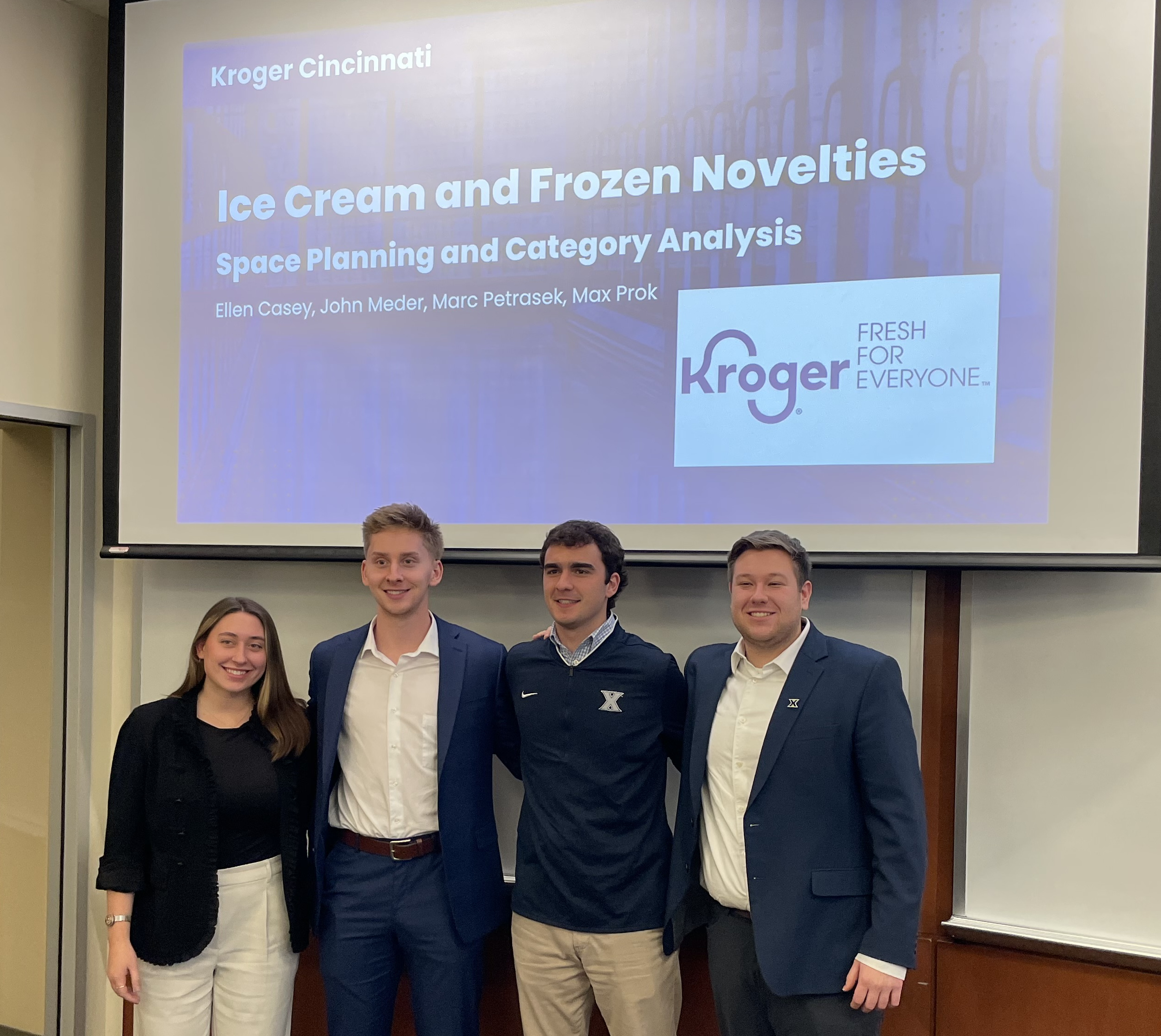How Space Planning Won a Standout Student’s Heart
By: Michael Wilkening, Communications Manager, The Association of Retail & Consumer Professionals (ARC)
Republished with permission from the article: How Space Planning Won a Standout Student's Heart
A campus leader and a decorated Marketing student at Xavier University, Max Prok could have chosen any number of career paths when he entered the workforce earlier this spring.
He chose retail space planning.
Why?
“It’s like solving a complex puzzle, where every piece impacts the shopper’s experience and ultimately the success of the category,” Prok said of his work today as a space planning analyst for P.L. Marketing.
Prok’s words should be music to the ears of space planning leaders, some of whom aren’t entirely confident that their field is a place where professionals look to build a career. While several U.S. universities are working to bolster space planning’s reputation, it all comes down to whether the field can actually win over talented graduates when it’s time to choose a career.
Luring candidates like Prok is exactly what retail space planning needs to thrive and survive, and the story of how he got hooked on space should be illustrative to industry leaders about what it will take to win a fierce battle for young talent.
So how did Prok come to space planning? It’s a story in four parts.
Part One: A Natural Curiosity About Stores
Growing up, Saturday morning was errands time in the Prok household, which often meant a trip to the grocery store.
Here, the seeds were first planted for our protagonist to begin thinking about space planning, even if he wasn’t completely sure what it was.
“I was constantly curious: Why were the cereals where they were?” Prok recalled. “Who decided that frozen pizza should be at eye level? I had this natural inclination to question the logic behind the shelf.”
Part Two: “X” Marks the Spot
The boy with the inquisitiveness about retail soon grew into a young man who landed at Xavier, which has a robust category management program. By his sophomore year, Prok turned his focus to a marketing degree, where he began taking CatMan courses, which piqued his interest.
Another formative experience came when he took a leadership role at the Sedler Xavier Center for Experiential Learning (XCEL) in Business, a university initiative linking students to local businesses for hands-on exposure and experience.
Prok is a firm believer in the power of experiential learning – and believes it’s essential to getting more students excited about various career options, including space planning.
“Honestly, one of the best ways you can get to students is through experiential learning,” he said.

Max (left) recruiting students to get involved with Sedler XCEL
Part Three: Discovering Space
By the end of his junior year, Prok believed a career in brand management, not category management, might be his calling. But he wasn’t quite sure if he was creative enough for brand management, and he didn’t know if he had the data chops for category management.
Then, in the fall, he was one of nine students selected to take part in Xavier’s Retail Analytics Practicum, a semester-long course culminating a project for Kroger and P.L. Marketing and drawing heavily on category management and space planning fundamentals.
It’s here that Prok got his first practical experience in space planning, both in a classroom setting and in a project setting.
Suddenly, a somewhat fuzzy career search got some clarity. Now, space planning became a major interest, and its linkage to category management intrigued him, too.
He started to connect the dots. Maybe space planning could be a career-launching point.
“The course was transformative for me,” said Prok. “I finally saw how strategy, consumer data, and in-store execution came together in a real, meaningful way. I loved the problem-solving, the balance of logic and creativity, and how each decision could impact not only shopper behavior but overall business results. It was the first time I felt like I had found a niche that truly aligned with how my brain works.
“It gave me a clear direction: I realized that while being a Category Manager might be a long-term goal, space planning was the perfect place to start. It would give me the tools, understanding, and experience to one day contribute at a higher strategic level — and I was all in.”

Max (far right) following a group presentation in the Retail Analytics Practicum course (MKTG 396)
Part Four: Hands-On Experience & Employer Exposure
As every college student knows, deciding what you want to do and then actually finding a job in that field are two different things altogether.
But Prok had several advantages working in his favor as he began seeking his first role in space planning. For starters, the retail practicum trained students in Blue Yonder, which is widely used throughout the industry. Students also had the benefit of working with IRI, Circana and 84.51° data. Finally, Prok got to know P.L. Marketing well through his coursework, and he came away impressed with the company’s culture. When they offered him a role as a space planning analyst, he accepted.
“Everyone I met was genuine, collaborative, and truly invested in helping each other grow. It’s a place where I could see long-term opportunity — where learning is encouraged and advancement feels both realistic and supported,” he said. “That environment made the choice easy, and I’m grateful every day that I followed that path.”
Getting Started
Prok hit the ground running in his new role at P.L. Marketing in May, focusing on Kroger’s international categories. Here’s how he described his day-to-day work.
“My team and I, along with our Category Manager, leverage data from syndicated sources like IRI and 84.51° to analyze assortment performance and shopper behavior, which helps inform how space should be allocated to maximize sales and margin opportunities,” Prok said. “This data-driven approach allows us to make recommendations that align closely with broader business goals and customer needs.”
Prok enjoys working with P.L. Marketing’s various teams — a must for optimal space planning strategy and execution.
“Equally important is the collaborative aspect of the work we do at P.L. Marketing,” he said. “We regularly partner with category managers, merchandising teams, and divisional stakeholders to align shelf layouts with strategic priorities. This teamwork ensures that local preferences, seasonal trends, and competitive dynamics are all factored into our space planning decisions.”
When we caught up with Prok recently, a Microsoft Teams ringtone sounded in the background as we chatted on the phone. He was now seven weeks into his new role, with college fading into the rearview.
We had to ask: what was it like walking aisles now, with space planning his line of work?
He thought for a moment.
“It's constant questions of, ‘Why are these things next to each other?’” Prok said. “Why have they been mapped next to this category? What was the reason? Was it space? Was it like spacing? Was there not enough space to put it somewhere else or was it truly just these items are things that go kind of together?”
The curiosity remains for the still-young Max Prok, though it’s now paired with a professional’s eye and mind. He could have chosen any line of work, but he chose space planning, and he did it because it lit up his mind in special ways.
As he put it: “There's so many things that go through my mind now when I walk into a store, not just the grocery store, but even a retail apparel store. You know, it’s all kind of applies pretty similarly. It might be different from food to apparel, but just knowing why or wondering why those things are placed in that area really, really tickles my brain.”
For space planning team leaders, it’s a reminder that there are plenty of potential new hires out there with fresh, inquisitive perspectives walking the aisles. Now, it’s a matter of finding them and hooking them. Hanging out at schools like Xavier seems like a good start. Our suggestion? Trips to university career fairs better stay in the budget.
Want to Learn More?
Details on the Concentration in Category Management within the Marketing degree program
Contact Professor Scott Beck or Dr. Bryan Buechner with any questions!
